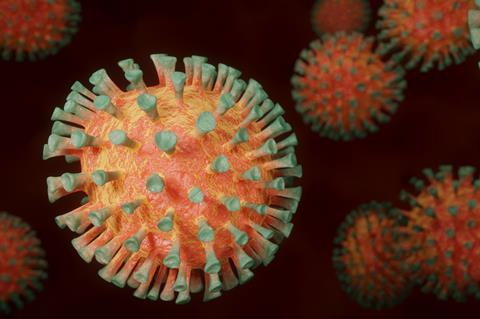A genomic surveillance study in Mozambique reveals that the beta variant of the virus was transmitted through regional migration, and questions the benefits of closing borders.

The new study co-led by ISGlobal, the Manhiça Health Research Centre (CISM) and the Instituto de Biomedicina de Valencia (IBV), used cutting-edge sequencing technology and phylogenetic analysis to study the second and third waves of COVID-19 in Mozambique. The results, published in the Lancet Global Health, show that the beta variant of SARS-CoV-2 arrived mainly from South Africa, while delta arrived mainly from the UK and India, in addition to South Africa.
Since the start of the pandemic, global efforts to sequence SARS-CoV-2 have generated an unprecedented amount of data (more than 15 million sequences uploaded to the GISAID server to date). This information has been critical to understanding the evolution of the virus and the potential implications for vaccines and other public health interventions. However, the origin of the uploaded sequences has been uneven: sampling has been insufficient in many regions of the world, hampering genomic surveillance at local and global levels.
Little information
“Most African countries, with the exception of South Africa, have reported a very low number of sequences. In Mozambique, for example, we had very little information on which viral variants were circulating during the different waves of COVID-19, or where they arrived from and when,” says Alfredo Mayor, ISGlobal and CISM researcher.
In this study, a team led by Mayor, Inácio Mandomando (CISM), Iñaki Comas (IBV) and Mariana López (IBV), sequenced the viral genome from samples of symptomatic patients from southern Mozambique collected during the second and third waves of COVID-19.
The aim of the study was to quantify how many times the different variants of the virus had been introduced into the country, to identify where they came from, and to assess how much they contributed to fuelling the local pandemic. The research team used a novel computational tool (UShER) to compare the sequences generated with more than seven million published sequences.
Routes of transmission
The results confirm that the vast majority of the nearly 1,000 sequences from Mozambique analysed in this study corresponded to the delta variant (which dominated in the third wave, between June and September 2021), followed by beta (which dominated in the second wave, between January and March 2021), although other variants not previously reported in Mozambique (such as AY.37 and C..1.2) or even in Africa (such as AY.29) were also identified.
The analysis showed that the beta variant was introduced 190 independent times over a seven-month period, mostly from South Africa, the neighbouring country where the variant is thought to have originated. The alpha variant, which was dominant in Europe at the time, was not detected.
In contrast, delta was introduced more quickly (most of the 220 independent introductions occurred over four months) and from further away: UK and India, in addition to South Africa. Delta quickly overtook beta, due to its higher transmissibility and greater community transmission.
Local spread
The results also show that most introductions, whether of beta or delta, did not generate descendants. Only a fraction of the introductions contributed to the local spread of the virus.
“We can conclude that COVID-19 was transmitted in Mozambique through regional (for beta) and international (for delta) migrations,” explains Inácio Mandomando, coordinator of the bacterial, viral and other neglected tropical diseases area at the CISM.
“We have reached these conclusions because our study compares viral sequences from Mozambique with all available data worldwide; this approach allows us to minimise bias in inferring the origin of variants,” says Iñaki Comas, principal investigator of the Tuberculosis Genomics Unit (IBV).
These results raise questions about the cost-benefit ratio of such measures in a context of porous borders, such as in Mozambique.
“Movement restrictions and border closures probably prevented or largely delayed the introduction of variants from non-African countries, but were insufficient to stop the entry of the virus from neighbouring countries,” concludes Mariana López, a researcher at the Tuberculosis Genomics Unit at the IBV.







No comments yet